Most people know about indica and sativa strains of marijuana, but many people aren’t as familiar with hybrid strains. Combining raw indica and sativa variants creates a new breed of cannabis.
In this guide, we’ll explain the meaning of hybrid weed and delve into the fascinating realm of hybrid strains and their genetics. As we unravel the mysteries of hybrid strains, their characteristics, and the science behind their creation, we invite you to join us on a captivating exploration of the wonderful world of cannabis.
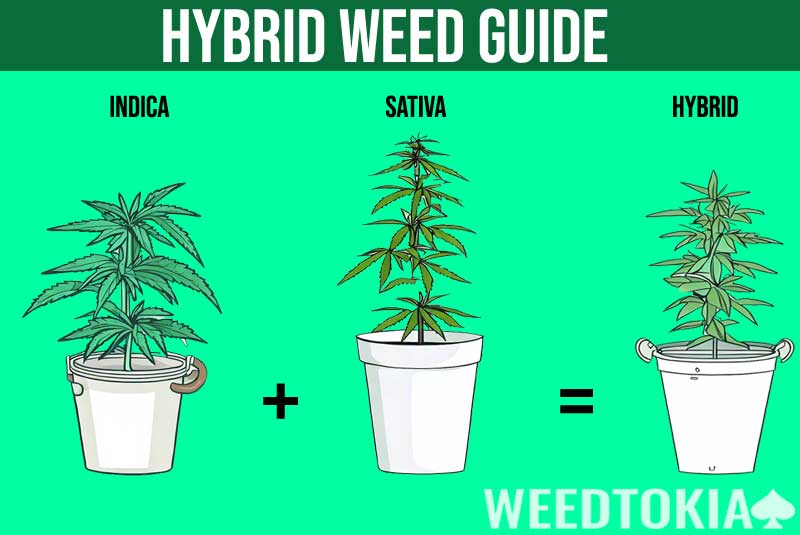
Hybrids cannabis strains are derived from cross-breeding indica and sativa plants, known as “parent strains.” Hybrid strains inherit traits from both their parent strains. Most strains available today are hybrid strains.
With events like the Cannabis Cup, international breeders began exchanging seeds, seedbanks began shipping seeds globally, and over time, thousands of hybrid strains were born.
Benefits of Hybrid Weed Strains
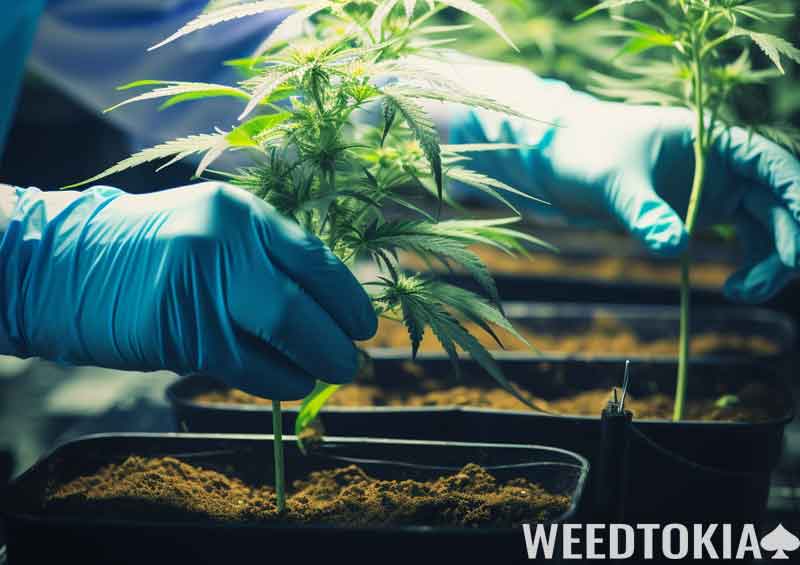
Hybrid strains are quite popular for a reason. They often are bred to combine desirable traits from two parent strains. For growers, hybrid strains can boost their yield. Strains like OG Kush yield up to 600 grams per plant. Selecting strain genetics allows farmers to improve attributes such as yield, strength, flavor, and smell.
Long gone are the days of pure indica and sativa plants. You’d get to smoke these strains if you were an English botanist in the 1700s. In modern times, most strains will be a hybrid between indica and sativa.
It’s safe to say that if you’re buying your weed in a dispensary, it’s some kind of hybrid weed strain.
The popularity and interest in hybrid strains can be credited to their unique characteristics and the benefits they extend to both growers and users. Bred selectively to merge the desirable traits of different cannabis phenotypes, hybrids have become the preferred choice for many cultivators looking for higher yields and specific effects.
This enables them to generate more “bud per square foot of light,” leading to better revenue and increased efficiency. Due to the nature of cannabis and its complex organic chemistry, there are an infinite number of strains that could technically be created.
Currently, there are over 1,000 hybrid strains in circulation. If you’re interested, you can read our guide on the most popular hybrid strains.
If you can come up with a unique stable strain that consistently produces the same yield and effect, you could have the next “OG Kush” or “Durban Poison” on your hands. Not only would you make a boatload of cash, you’d be cemented into the Cannabis Hall of Fame.
This is why many growers are rolling the dice in the hybridization game.
The Science Behind Hybrid Strains (Cross-Breeding)
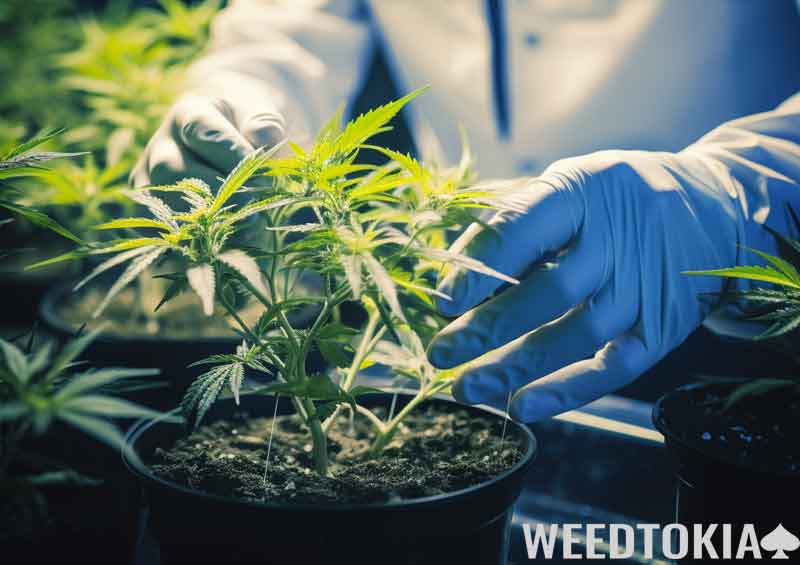
The consistent expression of a marijuana plant is well-known; each time you plant a seed of OG Kush, you’ll get a plant that behaves like an OG Kush plant. Stable genetics make a strain marketable, but it takes time to ensure there are no abnormal expressions several generations later.
The process of hybridization started centuries ago.
Imported indica strains from Asia brought distinct traits that differed from the common sativas found in the Americas. Things like bud density, resin production, and so forth made them popular in the region, and it wasn’t until they started to selectively breed only the females that artisanal cultivation became a thing.
These early cultivators unknowingly triggered a revolution that would blossom into a lucrative market and reinforce the counterculture movement.
So, what does the science of hybrid weed involve?
In a word – “crossbreeding.”
Breeders carefully select and control breeding to amalgamate desired attributes such as flavor, aroma, potency, and other genetic characteristics from the parent plants. With time, breeders stabilize these hybrid strains’ genetics to ensure the consistent display of desired traits in future generations.
Without stable genetics, the seeds will display variants, making the strain unreliable.
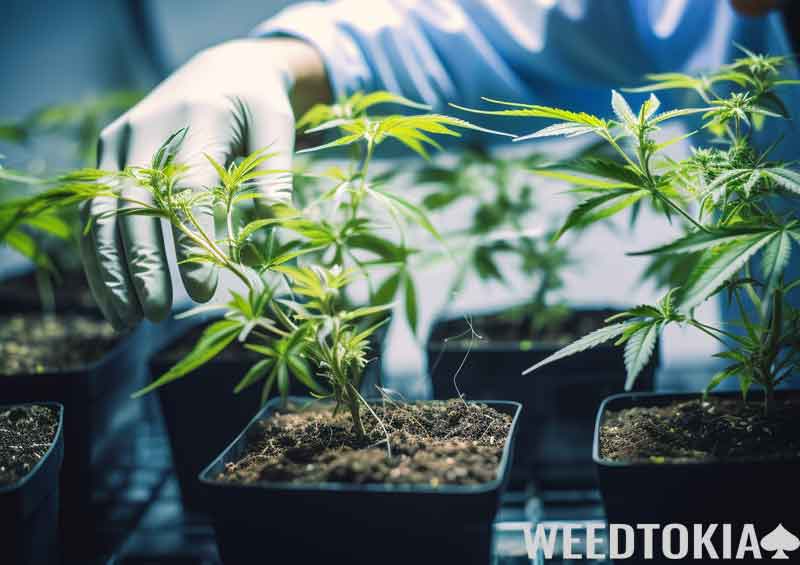
To stabilize genetics, breeders employ various techniques, including backcrossing, which involves the repeated crossing of the hybrid with one of its parent strains. This procedure strengthens and maintains the desired traits while eliminating unwanted variations. Think of it as “honing in” on a particular strain. One could also call it “plant incest,” but fortunately, plants don’t work like that.
Another technique is to breed phenotypes with similar characteristics from different genetics to reinforce particular traits.
The science of hybrid weed hinges on understanding genetic principles, such as dominant and recessive traits, genetic variation, and genes’ roles in determining plant characteristics.
And here you were, thinking that weed was for dummies! When you start diving into the finer details of hybridization, you realize just how deep this rabbit hole goes!
Through meticulous breeding practices, breeders can create hybrid strains that display a blend of the best traits from different parent strains, resulting in distinctive and sought-after cannabis varieties.
Although this may seem incredibly complex, it’s not overly difficult to execute at home. Numerous amateur breeders are creating their own strains that the market will likely never see. Once you grasp the basics of crossbreeding, you can also experiment with your own strain creation. And then your world of cannabis will be forever changed!
However, you’ll still need plenty of patience as breeding and stabilizing genetics can take years to successfully accomplish.
Downsides Of Hybridization
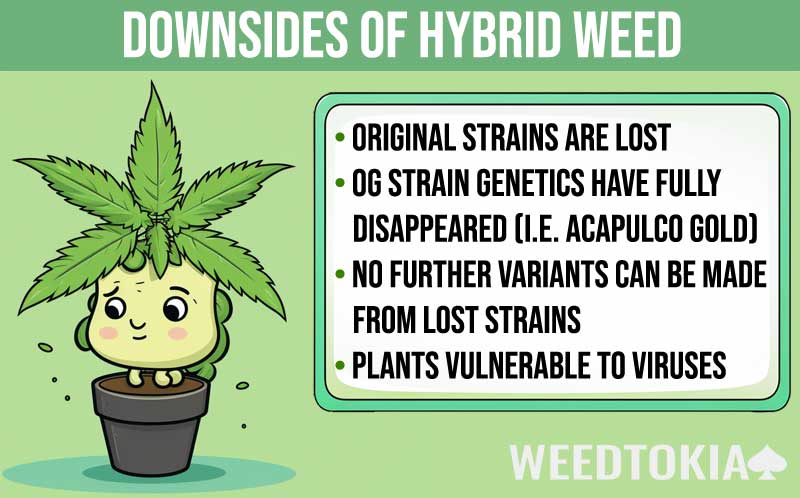
Hybridization has caused many unique and traditional varieties to vanish, each with its unique genetic blueprint. For example, the original genetics of Acapulco Gold is lost somewhere in time, and we’ll never be able to create variants from that specific plant’s genetics.
The increased dependence on a few hybrid strains may render crops more vulnerable to certain viruses and diseases. For example, the Hop Latent Viroid in California demonstrated a special liking for “sativa strains,” impacting a significant part of the state’s cannabis crops.
Considering that the vast majority of the cannabis in California was hybridized, it put 90% of all the crops in the state at risk!
Despite these challenges, the benefits of hybrid strains usually tip the scales in their favor. As a result, most commercial growers now predominantly grow hybrids, which is why it’s fair to say that most consumers regularly partake of hybrid cannabis varieties. Even if you’re buying from the streets, you’re probably smoking some hybrid.
However, in order to fully understand the concept of hybrids, it’s crucial to delve into the differences between sativa, indica, and Ruderalis cannabis phenotypes, as each contributes distinct traits and effects to the hybridization process.
Let’s take a look under the hood of your favorite smokable plant.
How is Hybrid Weed Made?
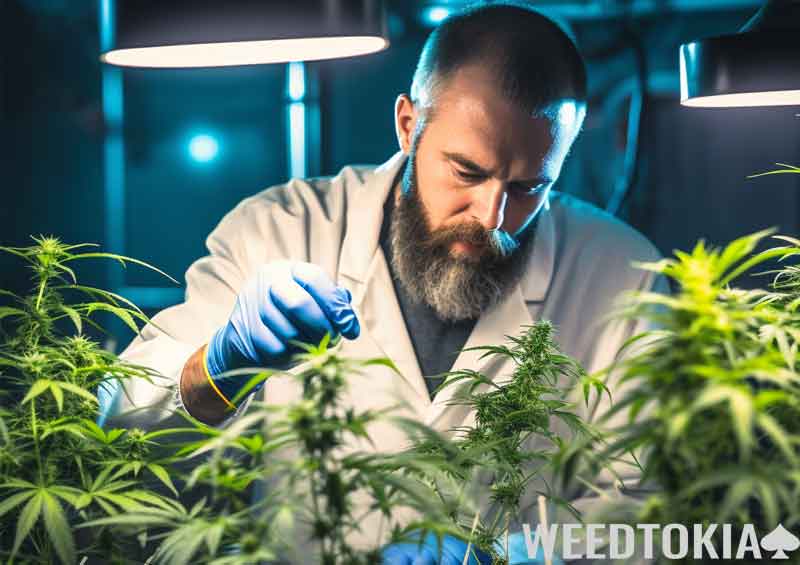
Hybrid weed is made by cross-breeding indica-dominant and sativa-dominant strains. This produces offspring that shares the traits of both parent plants. Sour Diesel, a hybrid strain, is 90% sativa and 10% indica.
Sativa strains are associated with energizing and uplifting effects, linking them to creative stimulation. People call this a “head high.” On the downside, sativas can also make your mind wander from place to place and not settle in one place. It can cause some anxiety in some people because it’s a pretty wild ride.
Indica strains are known for their calming and soothing properties, typically leading to a more sedating and body-focused experience. This is the “body high” they talk about. This is great for sleeping, stimulating appetite, and just unplugging from everything.
Too much indica can get you couch-locked, where you’re just so floored you’ll just lay there, locked by gravity. This is almost like a heavy sedative and can make one feel “claustrophobic” and heavy. The best solution when you’re under the elephant’s foot of an indica high is to go to sleep.
Finally, although less common, Ruderalis is appreciated for its auto-flowering capacity and can be crossed with other phenotypes to create hybrid strains.
You can think of this as the “glue” that helps these plants interact and allows breeders to create unique strains. Not to mention, all of your auto flowers are bred with Ruderalis, as this plant evolved to autoflower because of growing in colder climates and needing to adapt to the environment.
It’s because of this trait that you can now buy auto-flowering sativa strains.
Hybrid Marijuana Classification
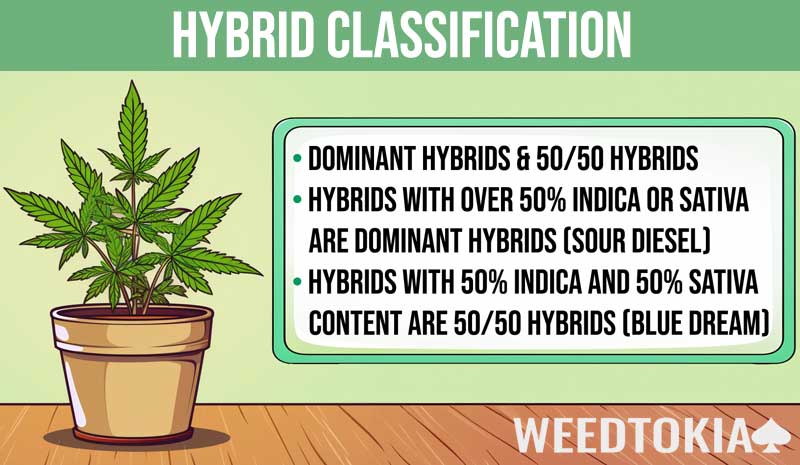
We can classify hybrids in two ways: Dominant hybrids and 50/50 hybrids. A strain like Sour Diesel is 90% sativa, so it’s a dominant hybrid. A strain like Blue Dream is 50% indica and 50% sativa, so it’s a 50/50 hybrid.
A modern hybrid is classified as an “indica” if the indica content surpasses the sativa content of the strain. A hybrid is classified as a “sativa” if the sativa content is dominant. Sour Diesel is classified as sativa because it’s 90% sativa and 10% indica.
There is a new conversation occurring within the cannabis marketplace over the classifications of sativa and indica. Indica and sativa designations have traditionally been employed to classify different strains of cannabis for commercial and consumption purposes.
As we expand our comprehension of cannabis genetics and its effects, it’s evident that these classifications are somewhat oversimplified and lack solid scientific grounding.
From a genetic perspective, indica and sativa varieties do not show a significant difference. Their genetics are essentially indistinguishable.
But once they start growing – they clearly reveal distinct characteristics and generally tend to have the same overall effects that belong to each phenotype.
A myriad of factors, including terpene and cannabinoid concentrations, as well as an individual’s unique biological makeup, influence the effects of cannabis.
Sativa strains will be taller with longer leaves, while indica strains will be shorter with bushier leaves. A hybrid strain will exhibit traits of both but appear more like its dominant parent strain.
In other words, if you plant a hybrid like Sour Diesel at home you’re going to notice the plant growing taller. This is because it’s 90% sativa and 10% indica and the appearance will be that of a sativa plant.
The same strain can generate different effects in various people or even within the same person at different times. For example, a strain might hit a bit harder if you have a cold since your body would be operating under abnormal circumstances.
Therefore, there is no uniform terminology that can accurately describe what a sativa strain or an indica strain would produce within the individual, making the categorization not truly a “reliable practice.”
Despite this, cannabis aficionados and dispensary employees frequently use indica and sativa labels, largely due to their cultural acceptance and the ease they bring to the conversation.
People already understand these terms, and it’s been cemented into the zeitgeist of the cannabis movement. Various platforms have strived to construct alternative classifications that focus on effects profiles, recognizing the limitations of the indica-sativa dichotomy. But once again, this is more of anecdotal data.
Nonetheless, if 90 out of 100 people say that a particular strain creates a particular effect, then it’s highly likely that it would hit you the same.
For the sake of simplicity and familiarity, we’ll continue to use the terms indica and sativa in this piece.
However, it’s crucial to remember that these labels don’t encapsulate the complexity of cannabis effects entirely, and individual experiences can vary greatly. As our understanding of cannabis deepens, we can expect the development of more precise classifications that better capture the nuanced effects of different strains.
Which Weed Strains Are Hybrid?
Over 90% of strains in the world today are hybrid. The two most popular, Sour Diesel and OG Kush, are hybrids.
Certain strains have made history when it comes to hybridization. During the early days of hybrid weed, strains such as Skunk #1, Northern Lights, and White Widow took the cannabis market by storm.
Skunk #1
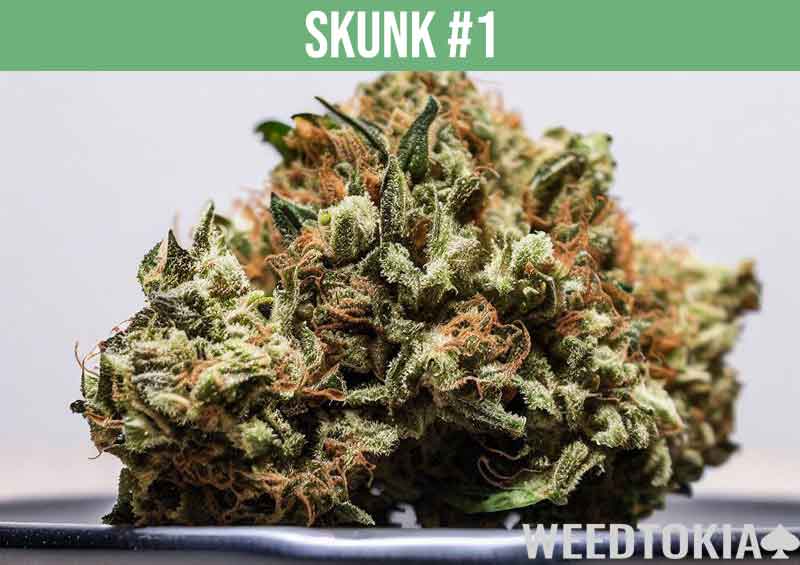
Renowned for its potent effects and intense aroma, it became a fundamental player in hybridization. This was also a very stigmatized strain in Europe, as allegedly it led to “cannabis induce psychosis” and is “much stronger than regular cannabis”. All of which is false and exceptional alarmism, was used for political means to ensure that cannabis prohibition remained “popular” with the general population.
Northern Lights
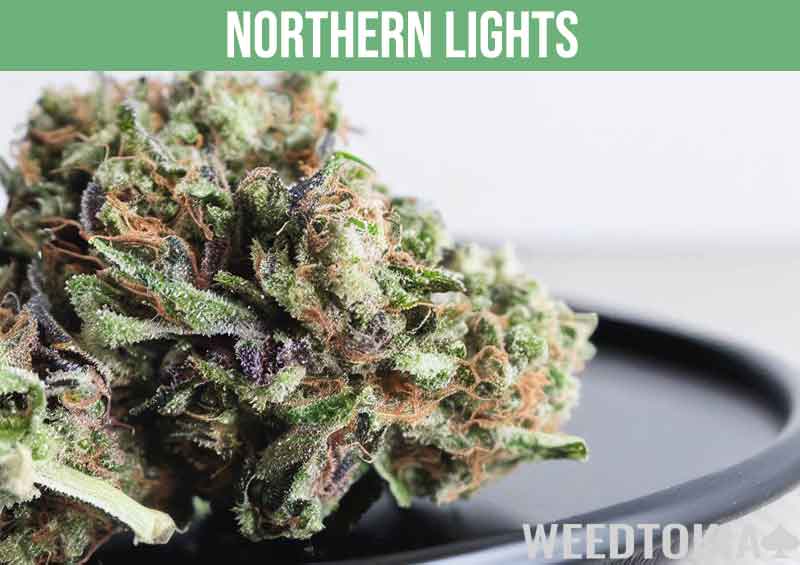
Initially cultivated in Canada, it gained popularity due to its profound relaxation and euphoria-inducing properties. It is a spectacularly beautiful plant when it flowers. It’s not one of the easiest ones to grow, but it definitely is worth the wait because the fruit of your labor will get you exceptionally stoned.
White Widow
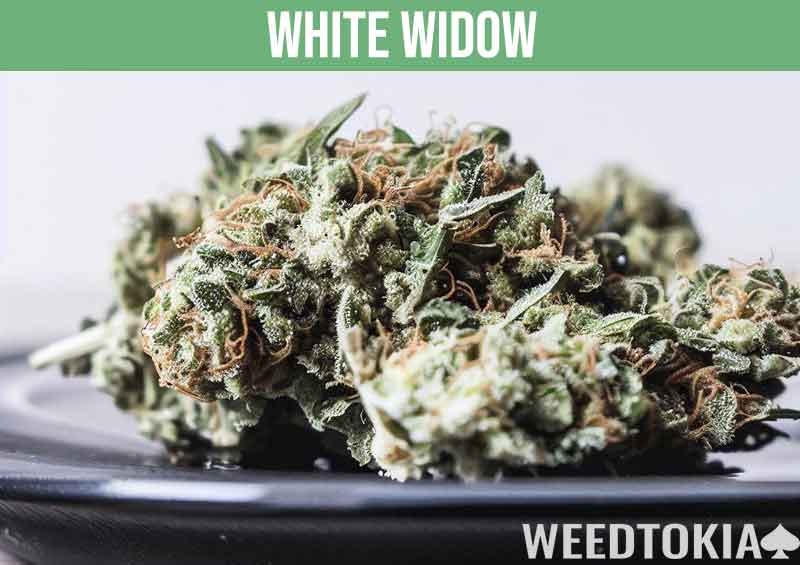
Recognized by its white pistils and resin-rich buds, gained fame for its intense high, and balanced effects. It’s almost an alien-looking plant and is definitely one of the strains that will probably be around for a long time.
These early hybrid strains paved the way for the wave of new and exciting varieties that would follow.
Modern hybrid strains continue to rule the market, enchanting consumers with their distinctive properties. Strains like Sour Diesel, Girl Scout Cookies, OG Kush, Blue Dream, and Gorilla Glue are now used to breed even more new strains.
One thing that is quite amazing about the cannabis industry is the names of the strain, which often provide hints of the taste, aroma, and phenotypical traits of the plant. Sometimes it informs you about the location where it’s from or even specific growers.
Sativa dominant hybrids typically have all of the effects of a sativa, with undertones of indica. However, the “indica expression” is typically related to bud size, resin output, and so forth. Of course, the opposite is true for indica dominants.
And this is hybrid strains in a nutshell!
How To Cultivate Hybrid Weed At Home

Imagine being able to create your very own strain based on other strains you have smoked in the past. If you like one characteristic of a plant, you can combine it with another and create your own variants. You may not even need to stabilize the genetics of a plant if you’re simply experimenting.
While the undertaking might be intricate, let’s look at a simplified method beginners can employ to dip their toes into the craft.
Get Male And Female Plants
To start breeding your exclusive hybrid strain, you’ll need one male and one female cannabis plant from differing strains.
Think carefully about the individual characteristics you want to incorporate into your hybrid. For instance, let’s say you have an indica strain that showcases a rapid growth cycle but lacks potency, while a sativa strain you possess is stronger but has a longer flowering period.
In this scenario, you could designate the indica as the male plant and the sativa as the female. This setup allows the sativa to keep most of its traits while absorbing the desirable characteristics of the indic (hopefully).
Gather Pollen From The Male
During the flowering stage, your task is to gather pollen from the male cannabis plant. You can accomplish this by gently detaching a male flower’s pollen sac or cluster and putting it into a compact container for pollen collection. You have to be careful because these pollen sacs contain a lot of pollen! If you gently tap them, the pollen flies off and can pollinate female plants for up to a mile away if it isn’t handled carefully!
Scatter Pollen On The Pistils
These sacs resemble small balls at the base of the flower. Scatter the collected pollen onto the female plant’s pistils, essentially replicating the pollination process nature usually handles. Be the bee!
Allow the female plant to proceed with its flowering. As the buds develop, they will also generate seeds. Once the seeds have reached maturity, you can harvest them for future growth. These hybrid seeds might not necessarily express the characteristics which you desire. This is where the element of unpredictability and exploration steps in.
Grow The Seeds
Now you have to germinate and grow the seeds to inspect the offspring. Monitor their growth patterns, flowering duration, strength, fragrance, and other preferred traits meticulously.
If the strain blend has produced the outcome you anticipated, you can progress on this path by picking the top offspring and growing them further. You’ll then want to take a male plant from the same stock and a female from the same crop and cross-breed them to see if the traits continue to express themselves in the third generation.
If the results fall short of your expectations, you will need to rethink whether you need to take the offspring and breed it with the desired phenotype, or to start over from scratch.
You can make this process as complicated or as simple as you desire. If you’re getting into the business of strain development, you’ll spend years on perfecting specific strains, and if you’re just a home grower trying to smoke some never before cross breeds – it will take a season or two.
Are Hybrid Strains “Genetically Modified” Weed?
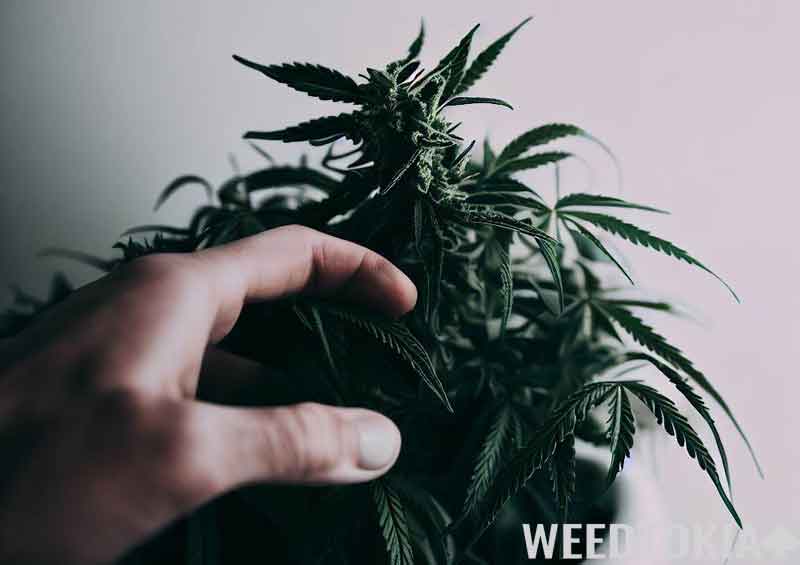
No, hybrid weed strains do not utilize GMOs. They are derived from mixing raw, natural female and male cannabis plants. There is no gene manipulation involved in the creation of hybrid strains.
Grasping the difference between genetic modification and selective breeding is key to dispelling false claims about the cannabis you’re smoking. Media outlets often tout it as “not your grandfather’s weed” – which is interesting since when your grandfather was smoking weed, they claimed that it would make him go insane since it was so potent and mind-altering.
In the previous section, we have delved deep into the wonders of selective breeding – which is the type of weed you’re buying from your favorite dispensary and even the streets.
Contrary to the alarmist methods deployed by cannabis opponents, hybrid weed is not genetically modified in the same sense as GMO crops, like those developed by corporations such as Monsanto.
Hybrid strains do not involve the infusion of alien genes or manipulation at the molecular level. Instead, they are reliant on natural genetic variation and the intentional selection of favorable traits. More Darwinian and less Dr. Frankenstein!
The fears surrounding “genetically modified weed” are frequently fueled by those who have vested interests in maintaining cannabis prohibition. The truth is that hybrid weed is a product of human intervention aimed at refining and enhancing the cannabis plant, much in the same way dog breeds have been created to express specific traits.
Cannabis Genders and Classification
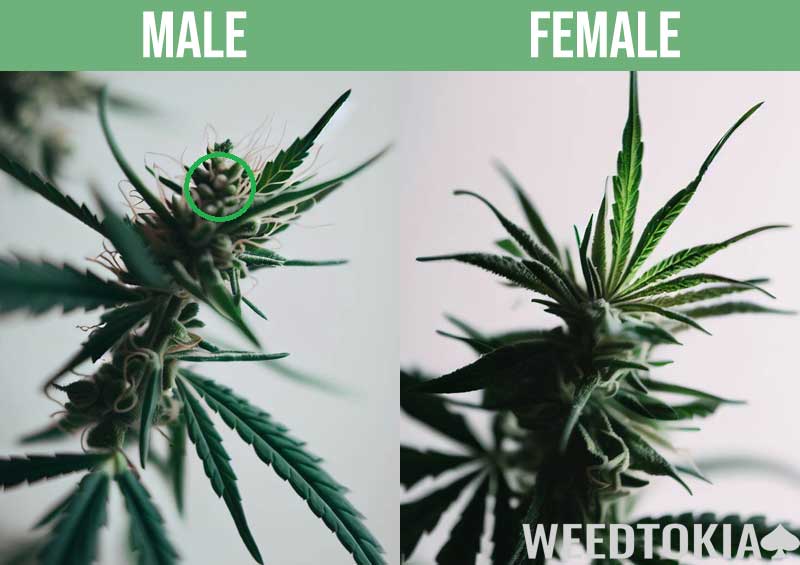
Cannabis exhibits clear gender traits, distinguishing it between male and female plants. Females have pistils and are smokable, whereas males have pollen sacks and are typically discarded – except when creating hybrids.
Besides gender expression, cannabis also includes different phenotypes often referred to as indica, sativa, and Ruderalis.
These terms, introduced by early botanists and explorers, have become vital in categorizing and understanding the diverse cannabis varieties. Of course, in modern times, we realize that these terms do not actually accurately represent the effects or chemical compositions of the cannabis plant. In other words, “there is no genetic difference between sativa and indica in relation to cannabinoids and so forth.
The roots of the terms “indica,” “sativa,” and “Ruderalis” can be traced to the work of famed Swedish botanist Carl Linnaeus in the 18th century.
Linnaeus documented the classification of plants and named cannabis sativa and cannabis indica based on their unique characteristics and geographical origins.
Cannabis sativa, coming from equatorial regions, was described as tall with thin leaves, while cannabis indica, originating from the Indian subcontinent, was depicted as shorter with wider leaves. Yes, they weren’t the most creative when coming up with names, but we can’t fault them for it, either!
Ruderalis, a less well-known and less cultivated variety, was later identified as a separate subspecies noted for its auto-flowering traits.
The Sticky Bottom Line:

The world of hybrid weed is fascinating, and we hope that after reading this piece, you have learned some fundamental truths about the process, the different strains, and so forth.
Let us know your favorite hybrid strains in the comment section below.
Thanks for reading, and happy growing!